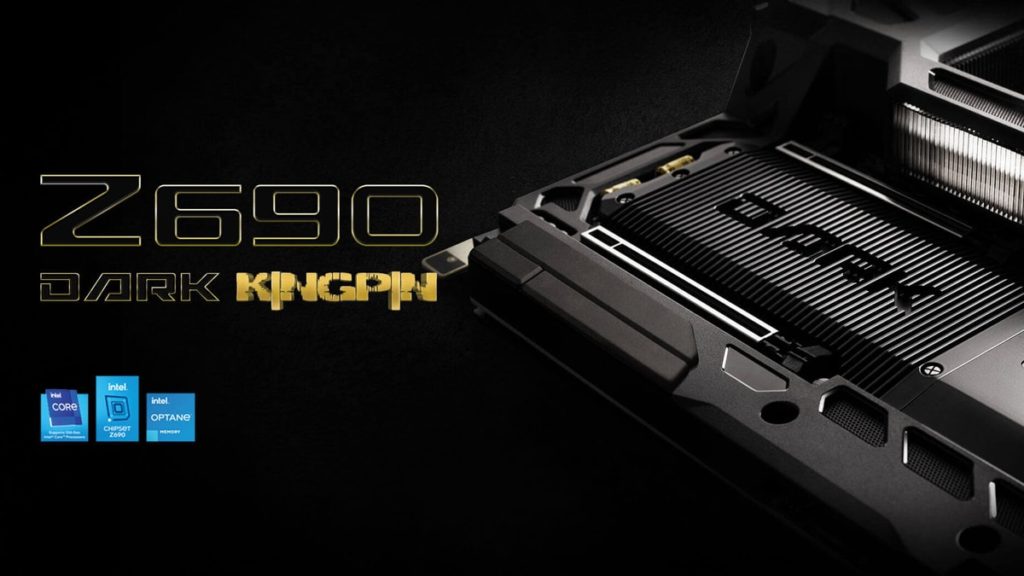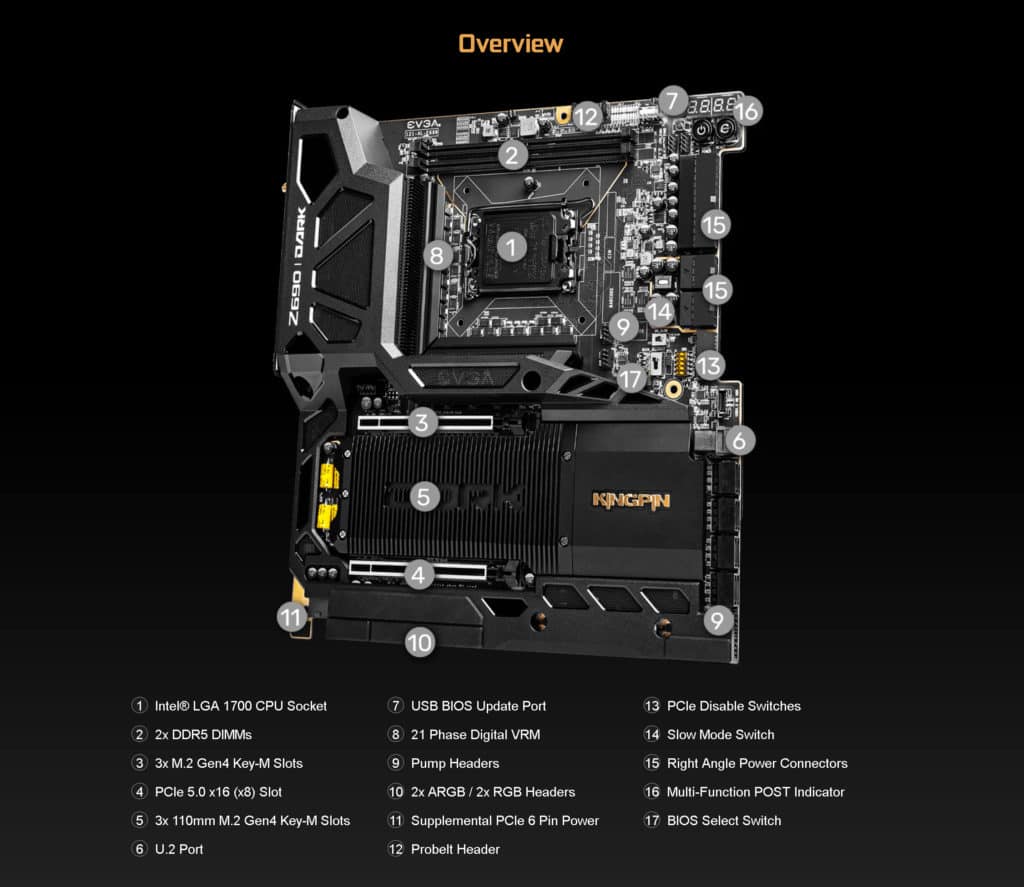Image: EVGA
EVGA has introduced the Z690 DARK K|NGP|N, its latest premium motherboard targeting demanding overclockers seeking to take Intel’s 12th Gen Alder Lake platform to its upper limits. The motherboard has been listed on the official EVGA shop for $829.99 and is exclusive to Elite members.
Z690 DARK K|NGP|N Key Specifications:
Intel Z690 Chipset12th Gen Intel Core i5/i7/i9 Alder Lake-S Processors21 Phase PWMDual Channel DDR5100MHz+ BCLKForm Factor – E-ATXSLI – 2-Way SLI6 Native SATA 6 Gb/s Ports, 2 from ASMedia ASM1061USB – USB 2.0 (2 Internal Headers + SPI to USB Type-A)2x Intel 2.5 Gigabit NICM.2 Key M – 3M.2 Key E – 1Audio – Realtek ALC1220 7.1 Channel HD Audio + SV3H615
Image: EVGA
Introducing the EVGA Z690 DARK...
Continue reading...
